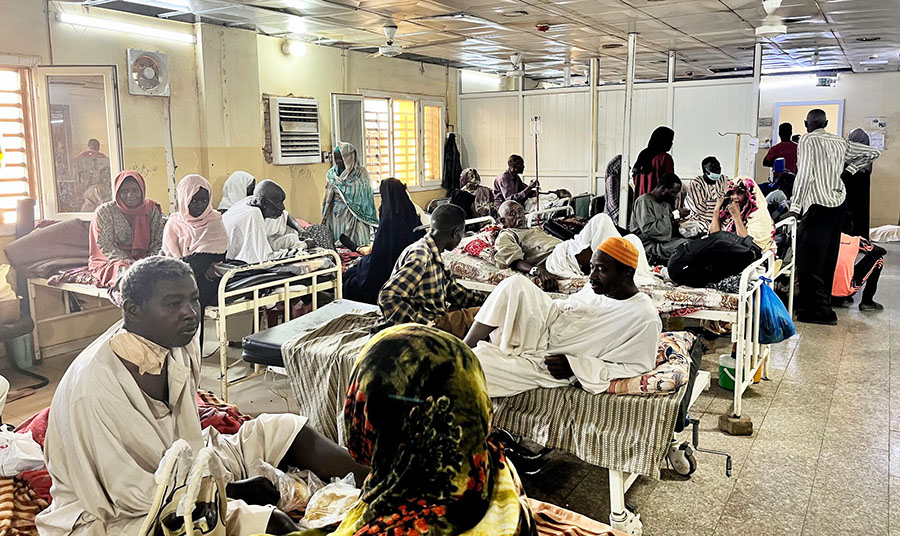
Two years of war in Sudan: The crisis is worsening, and civilians are the victims
Moatinoon – News report
As the war in Sudan between the Rapid Support Forces and the Sudanese Armed Forces enters its third year, people remain neglected, bombed, besieged, displaced, and deprived of food and basic life-saving services.
Of the countrys 50 million people, 60% are in need of humanitarian assistance, facing concurrent health crises and limited access to public healthcare. With the rainy season approaching, the situation is only getting worse.
"The warring parties are not only failing to protect civilians, but are continually exacerbating their suffering," says Claire San Filippo, emergency coordinator for Doctors Without Borders (MSF). "Everywhere you look in Sudan, there are massive, urgent, and unmet needs," she adds. "Millions are receiving little or no humanitarian assistance, medical facilities and personnel continue to come under attack, and the global humanitarian system is unable to provide even a fraction of what is needed."
As front lines shifted throughout the war, particularly in Khartoum and Darfur, civilians feared retaliatory attacks from both warring parties. Over the past two years, both the Rapid Support Forces (RSF) and the Sudanese Armed Forces (SAF) have repeatedly and indiscriminately bombed densely populated areas.
The RSF and allied militias have waged a brutal campaign, including systematic sexual violence, abductions, mass killings, looting of aid, destruction of civilian neighborhoods, and the occupation of medical facilities. Both sides have besieged cities, destroyed vital infrastructure, and blocked humanitarian access.
UNICEF Sudan Chief of Advocacy and Communications Eva Hinds said on Monday that the situation in El Fasher and surrounding areas, especially Zamzam camp, is extremely difficult.
She added that death in Zamzam camp represents a constant threat to children, whether due to the fighting around them or the collapse of services they rely on for survival.
In less than three months, nearly 70 children have been killed or injured in North Darfur, with Zamzam camp alone accounting for 16% of the total confirmed cases among children in El Fasher as a result of shelling and airstrikes.
The World Food Programme (WFP) confirmed that famine has been confirmed in 10 locations, eight of which are in North Darfur (including Zamzam camp) and two in the Western Nuba Mountains.
It stated that 17 other areas, including North, South, and East Darfur, the Nuba Mountains, Khartoum, and Al Jazirah, are all at risk of famine.
The program warned that bureaucratic delays, extortion, and the denial of movement of humanitarian aid workers continue to hamper the response.
It stated that two years of war have turned Sudan into the worlds largest hunger disaster, while famine continues to spread, noting that half of Sudans population is facing famine. Severe hunger is looming, with some 638,000 people facing catastrophic famine.
According to the World Health Organization, more than 70% of health facilities in conflict-affected areas are barely functioning or have closed, leaving millions of people without critical care amid one of the worst humanitarian crises in recent history.
The rapidly approaching rainy season threatens to exacerbate an already catastrophic situation. Supply routes could be cut off and entire areas submerged, isolating people just as the hunger gap is at its peak and exacerbating malnutrition and malaria.

